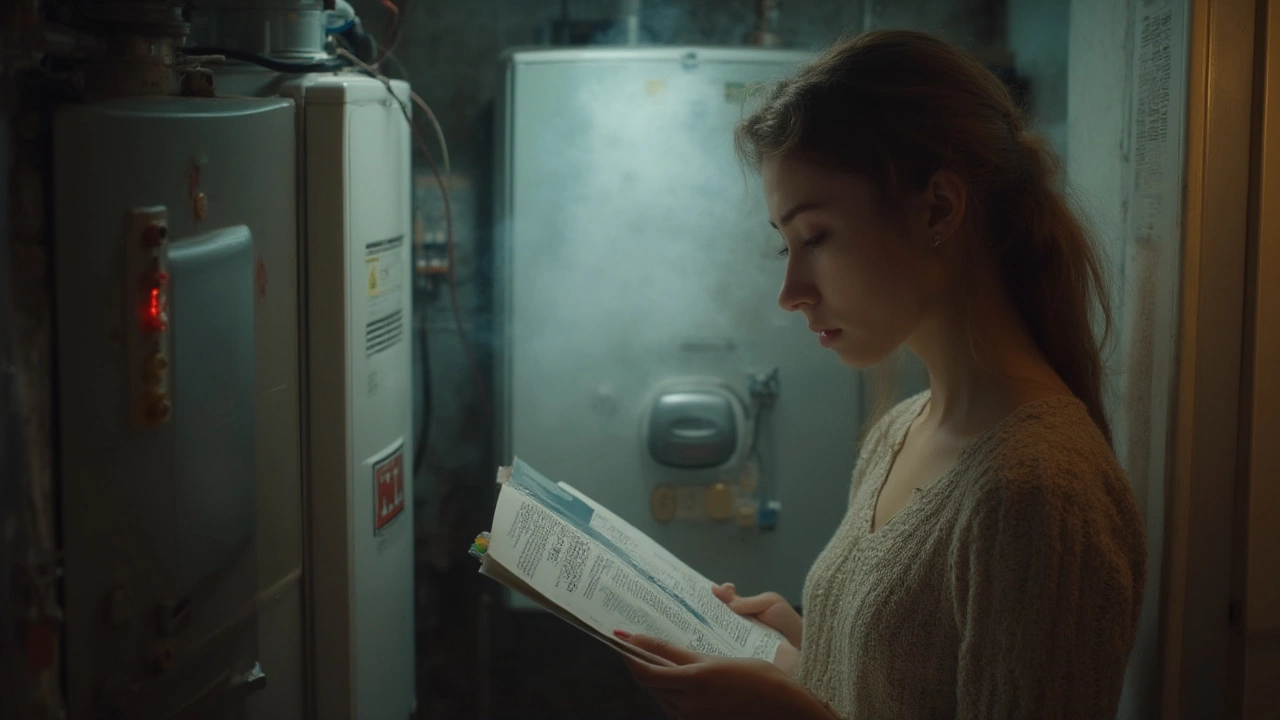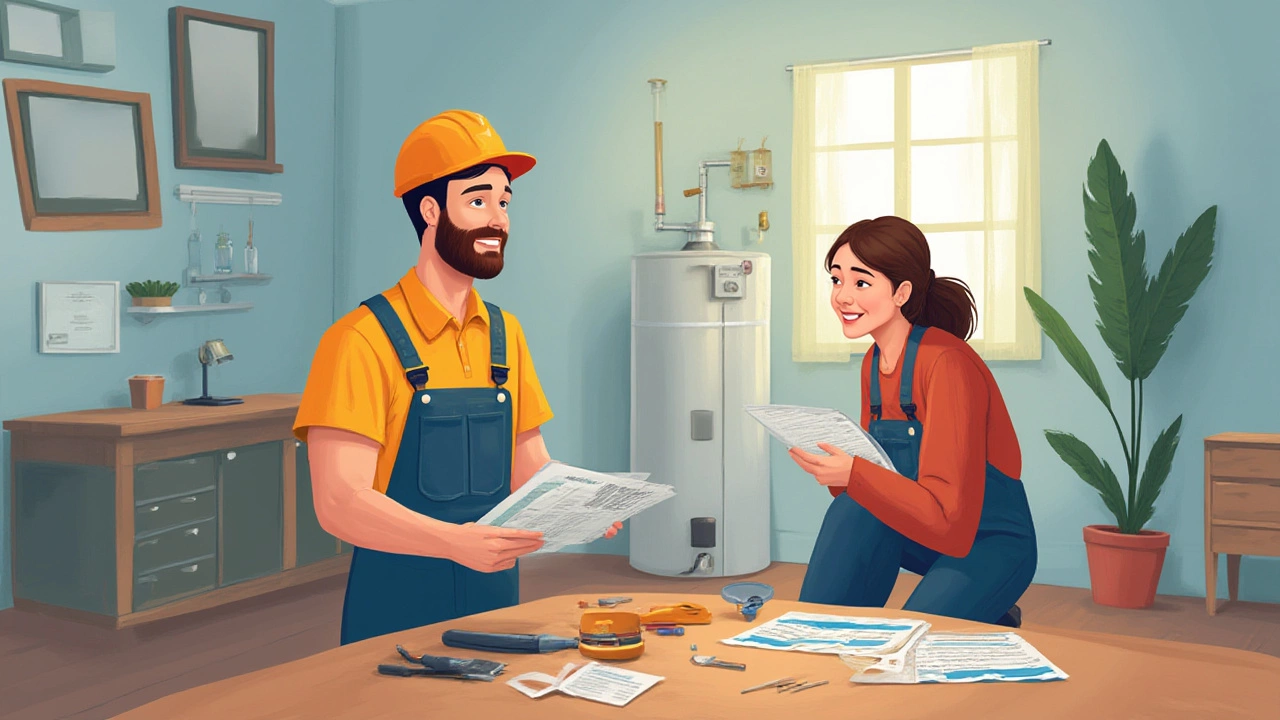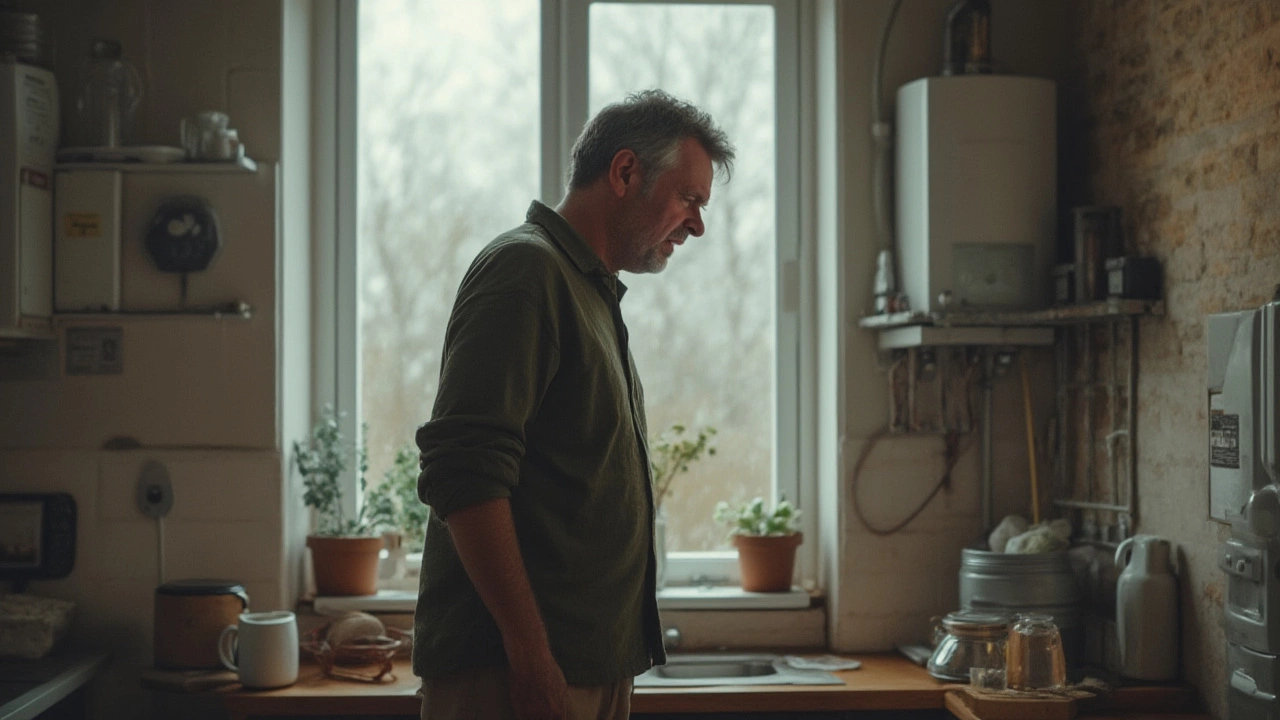Ever step into the shower, expecting steaming hot water, and bam—the water heater's tripped again? Not just cold, but a fresh serving of confusion. Appliances are supposed to make our lives easier, not send us stomping to the electrical panel before sunrise. This isn’t just annoying; it could be the sign of something dangerous (yep, I’m talking about fire risks and water damage nightmares). So why does this even happen? And better yet—what can you actually do about it?
Why Your Water Heater Keeps Tripping: The Real Reasons
Your water heater isn’t out to get you, even if it feels that way. When the circuit breaker keeps flipping off, it’s basically waving a little red flag: something’s not right. Electric water heaters are pretty simple devices—a tank, heated by electric elements, controlled by thermostats. So why all the drama?
First up, one of the big causes is a faulty heating element. If one of these elements shorts out, it can draw way too much power and force your breaker to shut off. Think of it like your body overheating to keep you from getting sick. You wouldn’t believe how often this happens—especially as heaters get older.
Then there’s the thermostat. If it’s defective or stuck on 'high,' it isn’t just wasting energy, it’s cooking the water well past safe levels. That spells tripping mayhem—and yes, it’s dangerous. Most heaters usually come with a hi-limit switch (called ECO—Energy Cut-Off) for this exact reason. When the water gets too hot, this switch will break the circuit and shut everything down.
But let’s not leave out wiring. Loose connections or charred wires can turn your water heater into a fire risk. Sometimes, the wires can literally melt where they attach to the elements or thermostats. I’ve seen this firsthand—once, my own heater started tripping, and when I checked, the wiring was one nudge away from turning our laundry room into a barbecue pit.
What about the breaker itself? Yeah, they go bad, too. Flick it a few thousand times and eventually, it just won’t handle the load anymore. You might blame the heater, but sometimes it’s the panel causing all the chaos. And don’t underestimate moisture. Water plus electricity? Bad combo. A tiny leak can work its way into connections and make the breaker trip for safety. Little drips can cause big problems.
Old insulation breaks down, rodents chew through wires, and DIY projects gone wrong have all led my friends to cold showers and expensive repairs. The point is, a tripping water heater is a symptom. To fix it, you have to find the cause.

Troubleshooting and Diagnosing the Tripping Problem
Ready to play detective? Some fixes you can do yourself with nothing more than patience and a few tools. Others? Don’t even think about tackling them without calling a pro.
Start with the obvious: does your breaker trip as soon as you flip it, or does it take a while? If it’s instant, that’s usually a short circuit—bad news for amateurs. But if it runs for a bit then trips, that hints more at a heating element or thermostat running rogue.
Always cut the power at the panel first. No exceptions—water heaters can pack a lethal punch. Once the heater’s dead, take off the access panels and use a non-contact voltage tester to double-check there’s no electricity.
Here’s what you want to look at:
- Inspect the element for burn marks, bulges, or corrosion. Elements with serious buildup or visible damage need replacing. If you have a multimeter, check for continuity. A zero or infinite reading means it’s toast.
- Check the thermostat. Make sure it’s tightly connected and not set too high. 120°F is safe for most homes, and pushing it higher asks for trouble.
- Look for melted wires or brown spots on insulation and terminals. That’s a red flag—damaged wires need replacing before you even try running the heater.
- Scan around for leaks, especially from the tank, temperature-pressure relief valve, or the fittings above. A damp tank top means water is making its way where it shouldn’t go.
- Give the breaker itself a once-over. Signs of wear, scorch marks, or a loose fit suggest it’s time for a pro to swap it out.
One tip most folks miss: if you have both upper and lower elements, test each one separately by disconnecting the wires from one and running the heater on the other. This can narrow down which element is acting up.
If you ever smell melting plastic or see smoke when the breaker trips, call an electrician immediately. Same goes for if you find water leaking inside the electrical compartment—water and power don’t mix, ever.
And if your water heater is more than 10 years old or showing rust-colored leaks, you might be facing a replacement, not a repair. It’s a pain, but modern heaters are usually far more efficient and safer.

How to Fix a Water Heater That Keeps Tripping
Once you’ve figured out what’s to blame, the fix might be easier than you think—or it might steer you straight to the phone for professional help. Here are the main solutions, divided by the real-world problems we’ve seen time and again:
- Defective heating element: Shut off power. Drain the heater down until the water is below the element. Remove the wires and element using an element wrench. Install a matching new element, reconnect the wiring tight, fill the tank, and restore power. Test again before bolting the access covers back on.
- Thermostat is bad or set too high: Turn off power. Remove the thermostat after detaching wires, then slip in the same model as a replacement. Don’t forget to set the temp to 120°F (49°C). Double-check connections before closing up.
- Wiring issues or overheating: If you see any charring or melting, disconnect and replace the affected wire segments. Tidy up connections. If the wiring damage is serious, bring in a licensed electrician.
- Broken or worn-out breaker: Swapping out a breaker can be a quick job—if you know your way around a circuit panel. If not, leave it to the pros. Always match the breaker’s amp rating to your heater’s specs (most heaters run on a 30-amp double pole breaker, but always check the label).
- Moisture, corrosion, or leaks: Tighten fittings above the heater, replace old gaskets, and fix any visible leaks before using the water heater again. Some leaks mean a new tank is needed. If water managed to leak into wiring, don’t risk it; call for help.
A neat trick I use: after making repairs and before screwing everything back together, run the heater with covers off for a minute and listen closely. Hissing, popping, or sizzling can warn you that something's still not right. Pay attention to smells—burning or melting scents aren’t normal.
Don’t forget to reset your hi-limit switch after any repairs. It’s usually a red button tucked away under the access cover. A firm press will let your heater reset—and if it keeps popping after repairs, the problem hasn’t been fixed.
One thing a lot of folks ignore: water heaters need room to breathe. If your heater is shoehorned into a closet stuffed with boxes and junk (like mine once was), it will get hotter, work harder, and risk even more electrical issues. Clear at least a foot around it, and never use the space for storage.
If you’re still stumped, or the tripping keeps happening with no obvious reason, the safe bet is a call to a certified repair specialist. Sure, it costs a little, but it’s a fraction of the price you’ll pay if a fire or flood kicks off. Every year, insurance reports tally water heater fires and floods costing homeowners millions—most started with just a tripped breaker.
And here’s a little secret I learned dealing with our old heater: keep records of any and all repairs. If you need to make a warranty claim or swap out your heater under recall (it happens more than you’d expect), a file of dates, receipts, and fixes will save you endless headaches.
A water heater that keeps tripping isn’t just annoying—it’s a challenge with answers. The cause could be electrical, mechanical, or just good old-fashioned neglect. With the right steps and a steady hand, you can reclaim your hot showers and banish that breaker-flipping routine for good. And hey, if you’re lucky, you might dodge that cold morning surprise. Not a bad deal, right?
